Comments
- No comments found
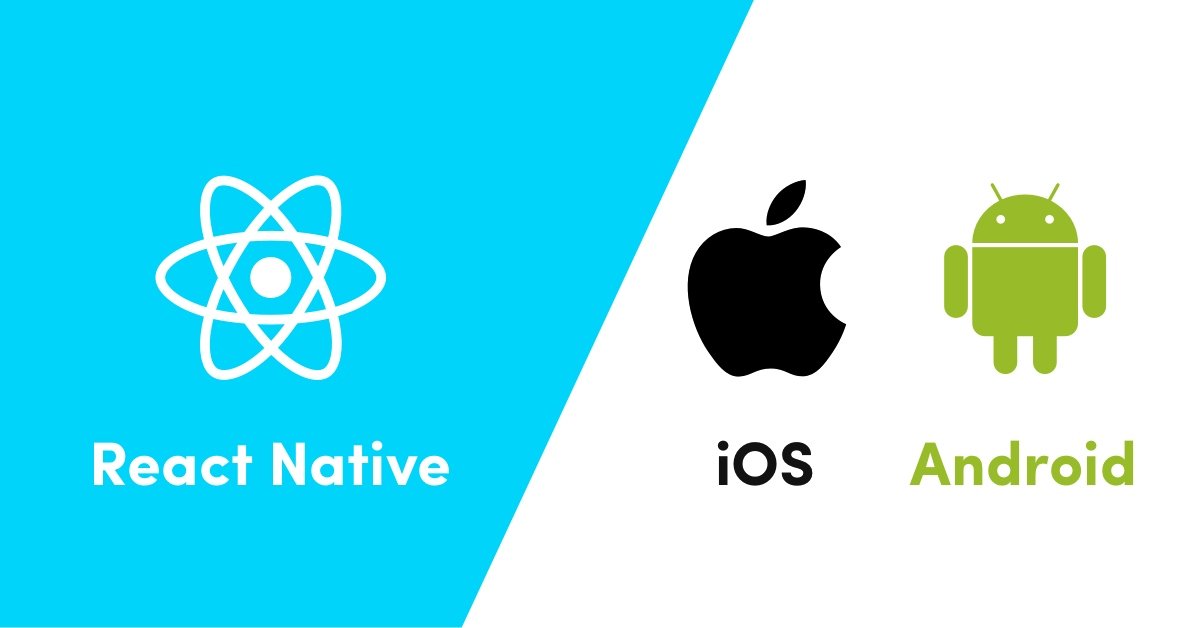
React Native is quickly becoming popular amongst mobile app developers, but it still needs more time to catch up with native app development.
However, it still lacks supporting the native look and feel of iOS and Android apps. Complex mobile apps also require the help from native Android and iOS developers.
Should mobile developers use React Native or Native App to design the perfect mobile app?
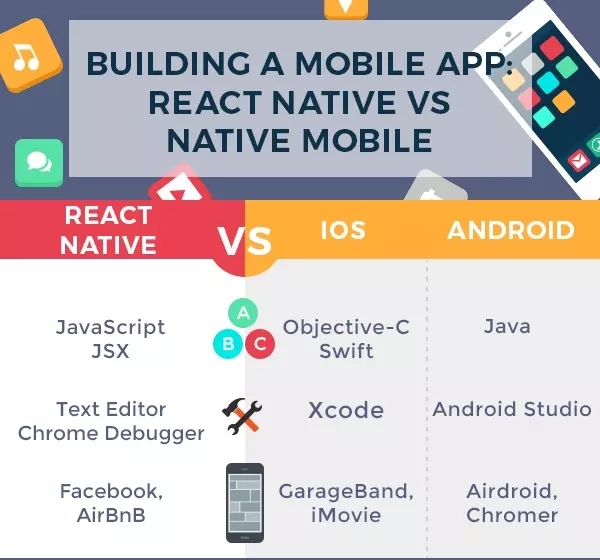
Source: By People Technologies
According to the popular mobile app developer Dino Trnka, the answer depends on your project:
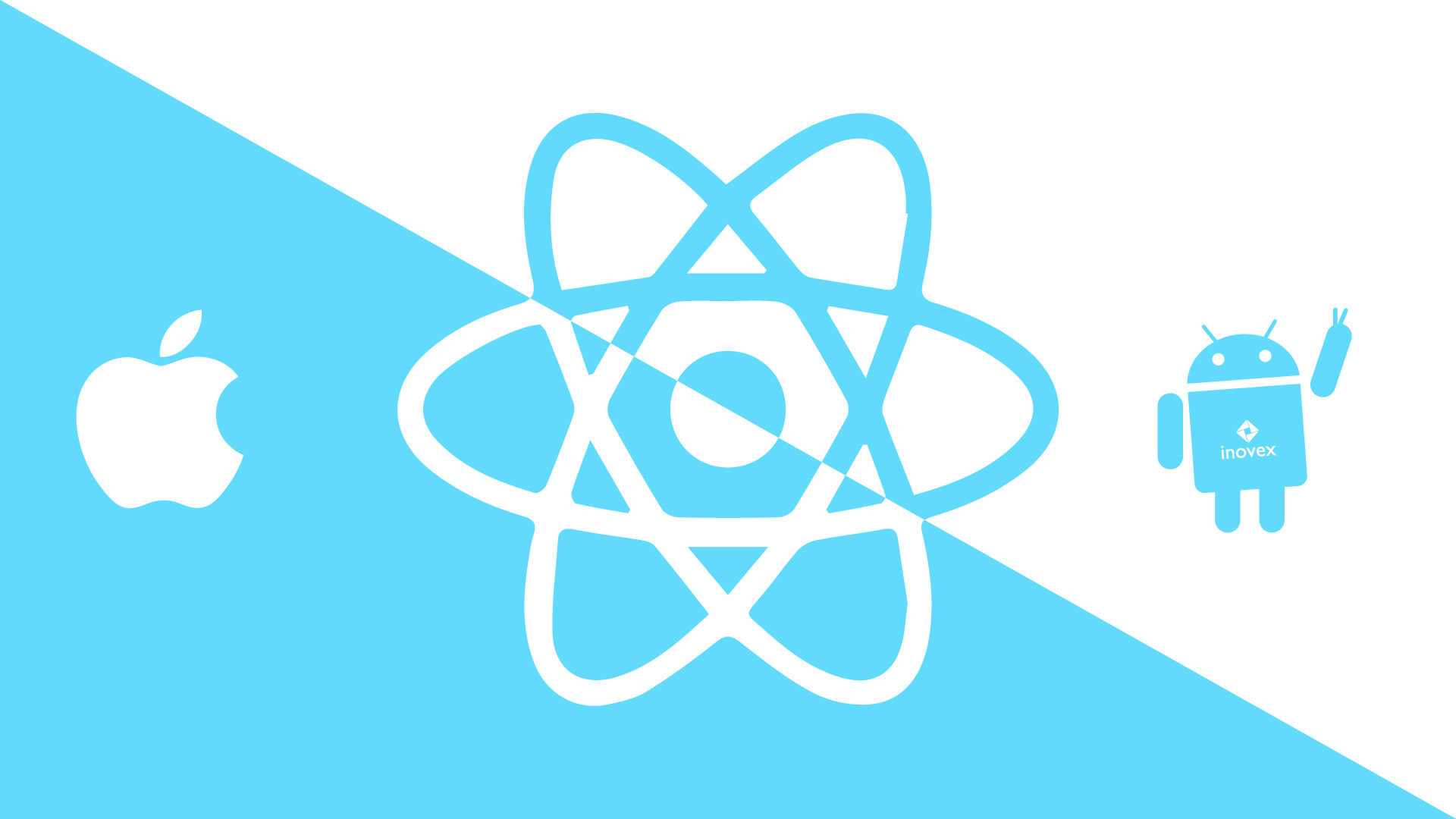
Source: Minura Samaranayake
React Native is a framework created by Facebook that allows you to develop native mobile apps for iOS and Android with a single JavaScript codebase.
A couple of years prior Facebook introduced their system called React Native (short RN), which is proposed to turn into the device for cross-stage improvement number one. The makers of the system guarantee that React Native will give simple and smooth iOS and Android applications advancement at the same time utilizing JavaScript programming language. Be that as it may, does it truly help and would it be able to cause the finish of local portable turn of events? How about we take a gander at React Native’s upsides and downsides and discover why this system isn’t the best decision now and again and why react native development agency will never be supplanted by JS authorities (at any rate in the near future).
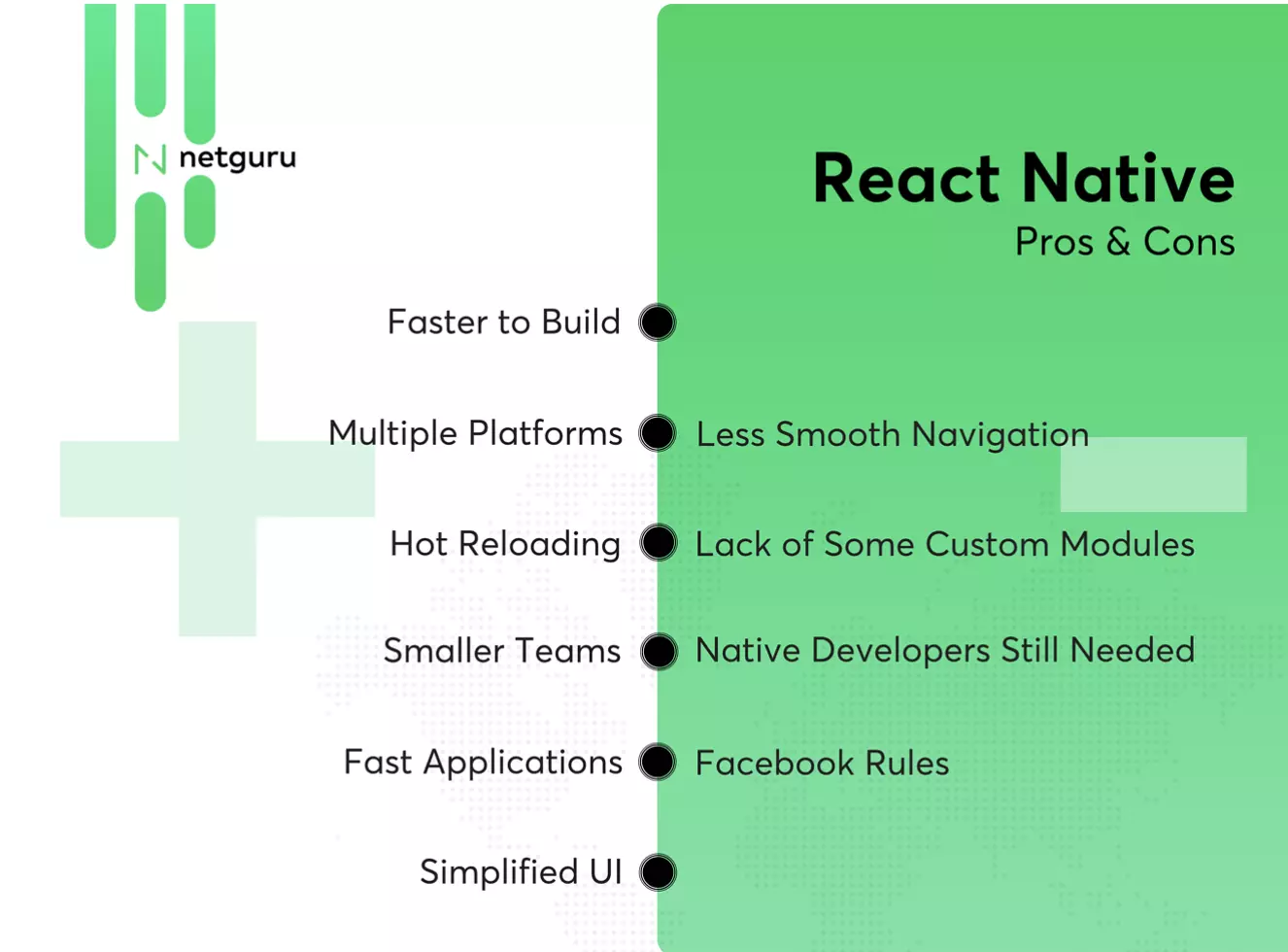
Source: Netguru
1. Faster to Build
The major selling point of React Native is the shorter development time. The framework provides numerous ready-to-apply components that can accelerate the process.
React Native still lacks some solutions, so you would probably have to build them from scratch, but RN is based on JavaScript, which gives access to the largest package ecosystem in the world. Having access to such an extensive base of packages, you can save much time, and it will only get better.
As the RN community is growing and Facebook regularly introduces new updates, we may find ready components for most of the solutions we need one day.
We built the very same app with both React Native and Swift. The latter took as much as 33% more time to build and still was working only on iOS – with no Android version. Significant savings can come with developing for more than one platform. As RN lets you share a big part of a codebase between operating systems within a few hours, you can potentially save time and money.
2. One Framework, Multiple Platforms
React Native allows you to reuse the codebase (or just a part of it) between iOS and Android. In practice, full cross-platform development is possible to some extent, depending on how many native modules you use in your application.
Some features will be available in npm packages, but others will need to be written from scratch. It will only get better, though. React Native community actively supports the framework, adding new tools to its open source.
Developing with JavaScript also provides an opportunity to share the codebase not only between mobile platforms but also React web applications. Active development of tools like React Native Web seems to point in this direction. This also allows the same developers to work both on web and mobile applications, as the technologies are very similar.
Whereas the stability of such solutions still leaves a lot to be desired, the possibility of sharing non-UI dependent code might still bring reasonable benefits. Besides shortening the development time, it could help improve the consistency of your app’s business logic between all supported platforms.
3. Quick Refresh
The React Native team seems to be listening to the community’s voice carefully. One of the top React Native pain points was that the Hot Reload feature was broken. Most developers had it turned off as it was unreliable. The response to these complaints is Fast Refresh. This tool, released at the end of 2019, fixes all the issues that Hot Reloading has and provides a great developer experience that speeds up both building new features and bug fixing.
4. Smaller Teams
Native development requires two separate teams for Android and iOS. It can hamper the communication between developers and, accordingly, slow down the development. Native Android and iOS teams have their own projects, and they often have different development speeds and methods. As a consequence, two projects can easily become inconsistent. It can lead to differences in the app’s implemented features, behaviour and appearance.
If you choose React Native, you will mostly need a JavaScript developer, who can write the code for both platforms. Obviously, apps with more native features will require more help from native developers as well. That said, in most cases, the team will be smaller in size, and thus easier to manage.
5. Fast Applications
Many argue that React Native code might hinder an app’s performance. JavaScript won’t be as fast as native code, but you won’t see the difference in most cases, anyway.
We ran a test and compared two versions of a simple application, written in React Native and Swift. Both apps achieved very similar performance results. Differences in performance were slight, almost unnoticeable to an average user. In the case of more complex applications, the framework might be less efficient, but you can always transfer some code to a native module, and it won’t be an issue anymore.
6. Simplified UI
React Native is solidly based on creating a mobile UI. In native development, you will need to create a sequence of actions in the application. RN employs declarative programming in which such an order of implementing actions is obsolete. As a result, it is much easier to spot bugs on the paths a user can take.
7. Large Developer Community
React Native is an open-source JavaScript platform that allows developers to contribute their knowledge to the framework’s development, which is freely accessible to all. If a developer experiences a problem, they can turn to the community for support (as of mid-2020, there are nearly 50,000 active contributors to the React Native tag on Stack Overflow). There will always be someone who’ll be able to help them resolve their issues – this also has a positive impact on improving coding skills.
1. Compatibility & debugging issues
While it may come as a surprise – after all, React Native is used by top tech players – it’s still in beta. Your developers might come across various issues with package compatibility or debugging tools. If your developers aren’t proficient in React Native, this might negatively impact your development as they spend time on troubleshooting.
2. Lack of Some Custom Modules
Despite its maturity, React Native still lacks some components. Others, in turn, are underdeveloped. The chances are you won’t have a problem with that, as the majority of custom modules you need are available, well-documented, and working properly.
However, it might happen that you will have to build your solution from scratch or try to hack an existing one. When developing your custom modules, you could end up with three codebases (RN, Android, and iOS) for a component instead of only one. In each of those codebases, there can be differences in behaviour and appearance. Fortunately, those situations don’t come about often.
We had problems with making shadows work in our React Native application, as the custom library was only available in a beta version. Therefore, we decided to write our own custom solution to make it look the same as it was in the native application.
3. Native Developers Still Needed
Implementing some native features and modules necessitates having detailed knowledge of a particular platform. The lack of out-of-the-box support for many native app functionalities (e.g. push notifications) used to be a significant issue with React Native development.
As the community grows, more and more open-source libraries provide easy access to native platform features. Nevertheless, the implementation of some more advanced features might still require help from iOS and Android developers.
Their input depends on the complexity of your project, but you need to bargain for them when kicking off with React Native, or alternatively Flutter, so in the end - React Native vs Flutter is a very personal choice of a development team.This might be an issue for small teams, in which developers don’t have any native mobile experience.
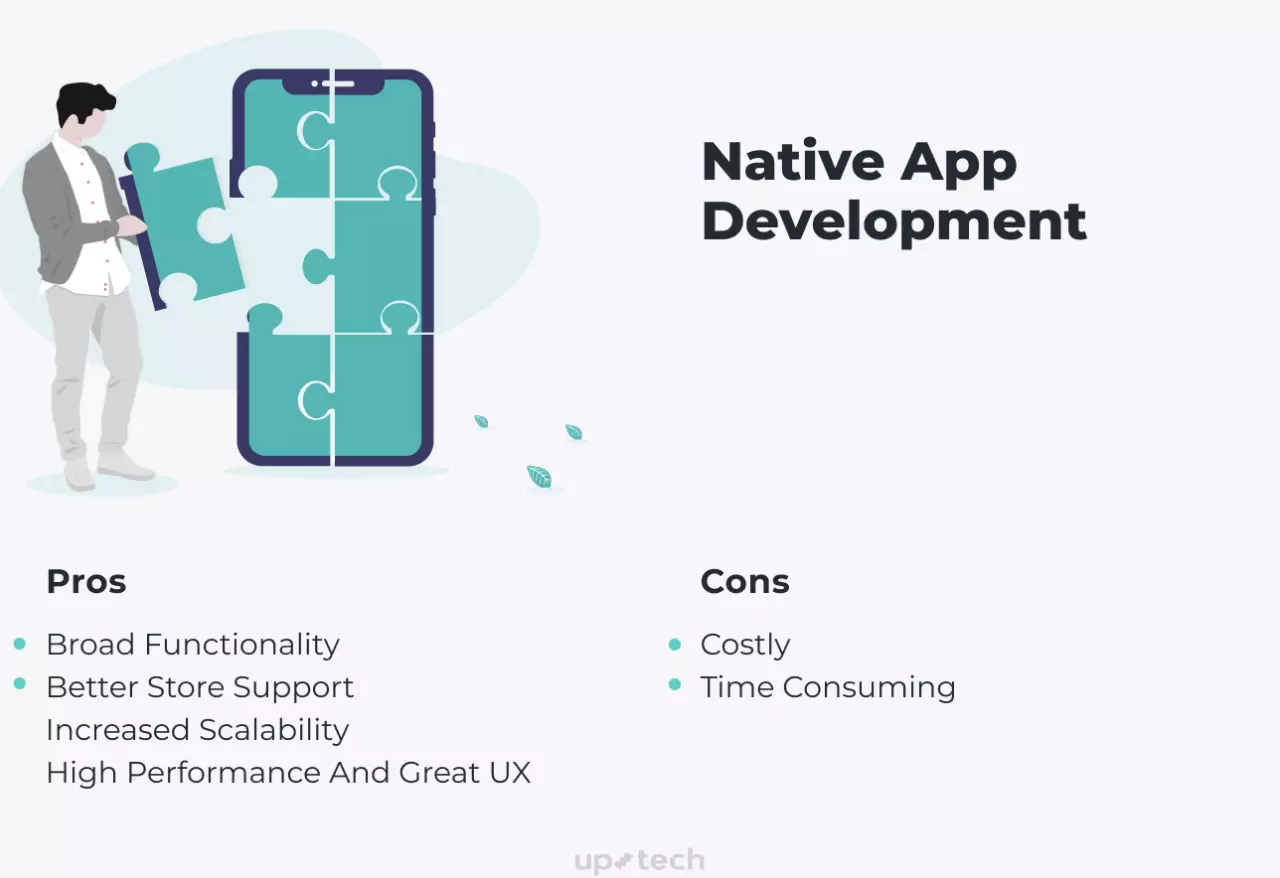
Source: Appinventiv
Native app development refers to building a mobile app exclusively for a single platform. The app is built with programming languages and tools that are specific to a single platform. For example, you can develop a native Android app with Java or Kotlin and choose Swift and Objective-C for iOS apps.
Native apps are known to deliver exceptional user experience as they are generally high performance. User experience is also enhanced as the visuals are tailored to the platform UX. However, startups are concerned about the high cost of native app development as they need to run concurrent development for both platforms.

Source: Uptech
You’ll have access to every API and tool provided by the platform that you’re working on. Technically, there are no limits on how the programmers could work with the new app.
2. Better Store Support
A native app is easier to be publish and usually ranked higher on the platform’s app store because it delivers better performance and speed.
3. Increased Scalability
Apps built for the native environment also tend to be more scalable, thanks to the flexibility in resources management and the array of tools available.
4. High Performance And Great UX
The direct interaction between the code and the underlying resources results in high performance. Also, native apps generally have a better UX that is synonymous with the platform.
1. Costly
Building native apps can be costly when you need to launch for both iOS and Android. It means you’ll need to deploy two teams working on different platforms.
2. Time Consuming
Native app development is time-consuming as the work done for a platform cannot be duplicated for another. Instead, a separate team is needed to work on the other version.
While native iOS and Android are here to stay, and they will remain with us in the foreseeable future, the future of React Native is uncertain. While React Native tends to keep up with the native trends, there will always be a time gap between some new feature (Face ID for example) emerging on the native platform and the same feature being included in React Native. This means that developing anything using fresh technology will take more time.
Chhavi is the Founder and Partner at Dikonia. She is passionate about delivering beyond expectations and crafting rewarding experiences. Her company provides innovative IT solutions including custom SaaS offerings that streamline workflow as well as development and design services in keeping with latest buying and market trends. Chhavi holds a Master of Computer Applications from Punjabi University.
Leave your comments
Post comment as a guest